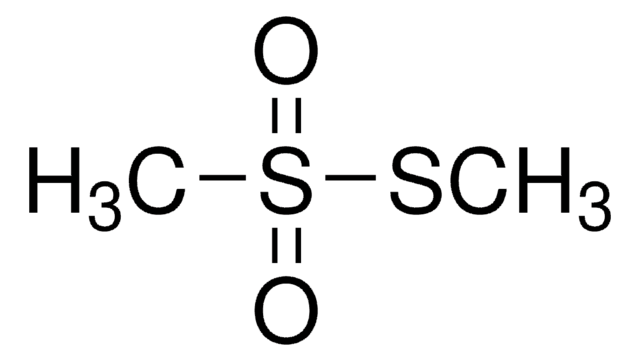A1935
Photobiotin acetate salt
For labeling DNA probes for hybridizations
Synonym(s):
Biotin {3-[3-(4-azido-2-nitroanilino)-N-methylpropylamino]propylamide} acetate salt, N-(4-Azido-2-nitrophenyl)-N′-(3-biotinylaminopropyl)-N′-methyl-1,3-propanediamine acetate salt
About This Item
Recommended Products
grade
for molecular biology
Quality Level
Assay
≥95%
form
film or powder
solubility
H2O: 10 mg/mL (Stable for at least 5 months if kept frozen and protected from light.)
storage temp.
−20°C
SMILES string
CC(O)=O.CN(CCCNC(=O)CCCC[C@@H]1SCC2NC(=O)NC12)CCCNc3ccc(cc3[N+]([O-])=O)N=[N+]=[N-]
InChI
1S/C23H35N9O4S.C2H4O2/c1-31(12-4-10-25-17-9-8-16(29-30-24)14-19(17)32(35)36)13-5-11-26-21(33)7-3-2-6-20-22-18(15-37-20)27-23(34)28-22;1-2(3)4/h8-9,14,18,20,22,25H,2-7,10-13,15H2,1H3,(H,26,33)(H2,27,28,34);1H3,(H,3,4)/t18-,20-,22-;/m0./s1
InChI key
FFBLNTOMOSLSQM-AYEYRVMASA-N
Looking for similar products? Visit Product Comparison Guide
General description
Application
Biochem/physiol Actions
Caution
related product
Storage Class Code
11 - Combustible Solids
WGK
WGK 3
Flash Point(F)
Not applicable
Flash Point(C)
Not applicable
Personal Protective Equipment
Certificates of Analysis (COA)
Search for Certificates of Analysis (COA) by entering the products Lot/Batch Number. Lot and Batch Numbers can be found on a product’s label following the words ‘Lot’ or ‘Batch’.
Already Own This Product?
Find documentation for the products that you have recently purchased in the Document Library.
Our team of scientists has experience in all areas of research including Life Science, Material Science, Chemical Synthesis, Chromatography, Analytical and many others.
Contact Technical Service







